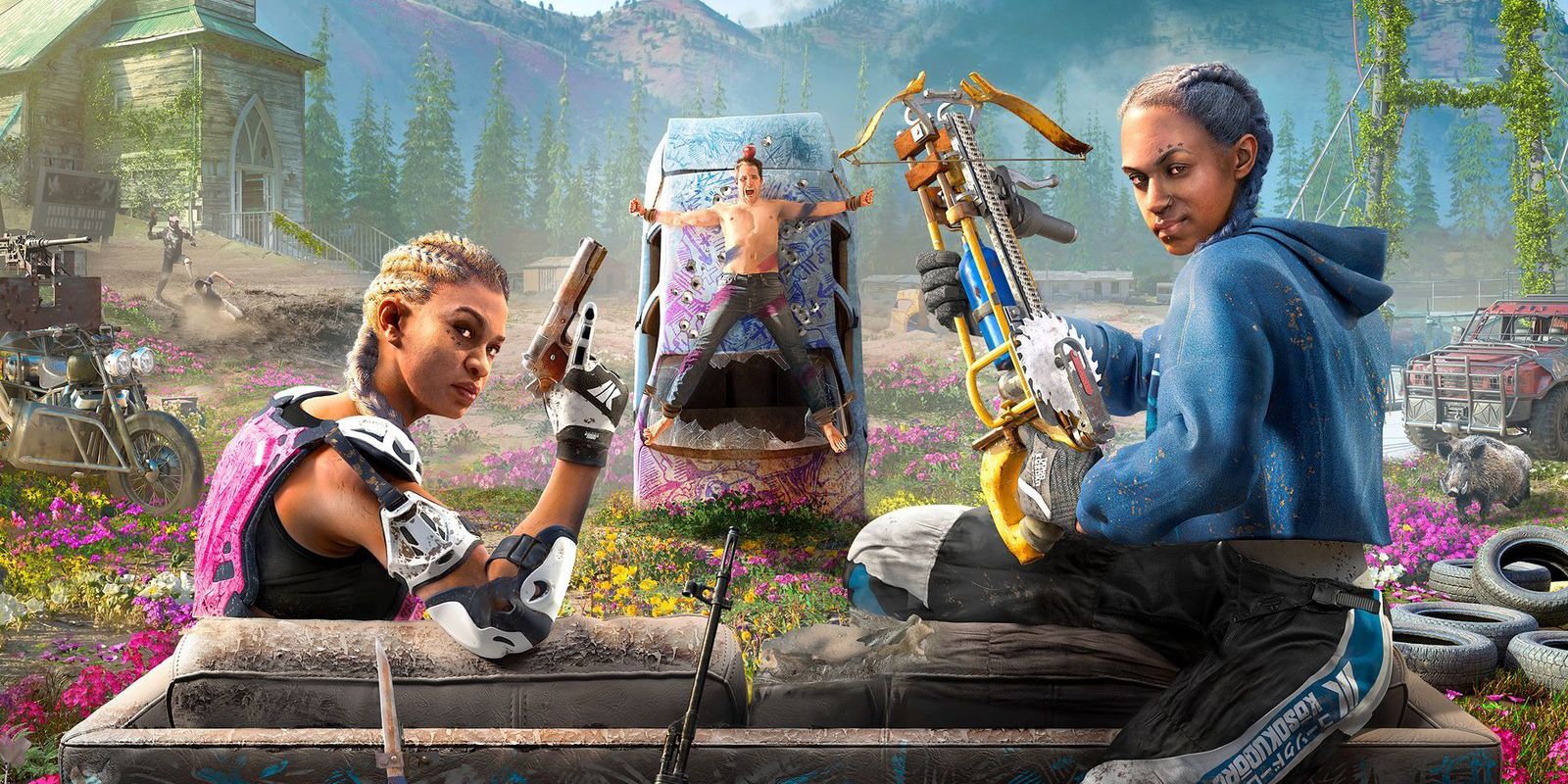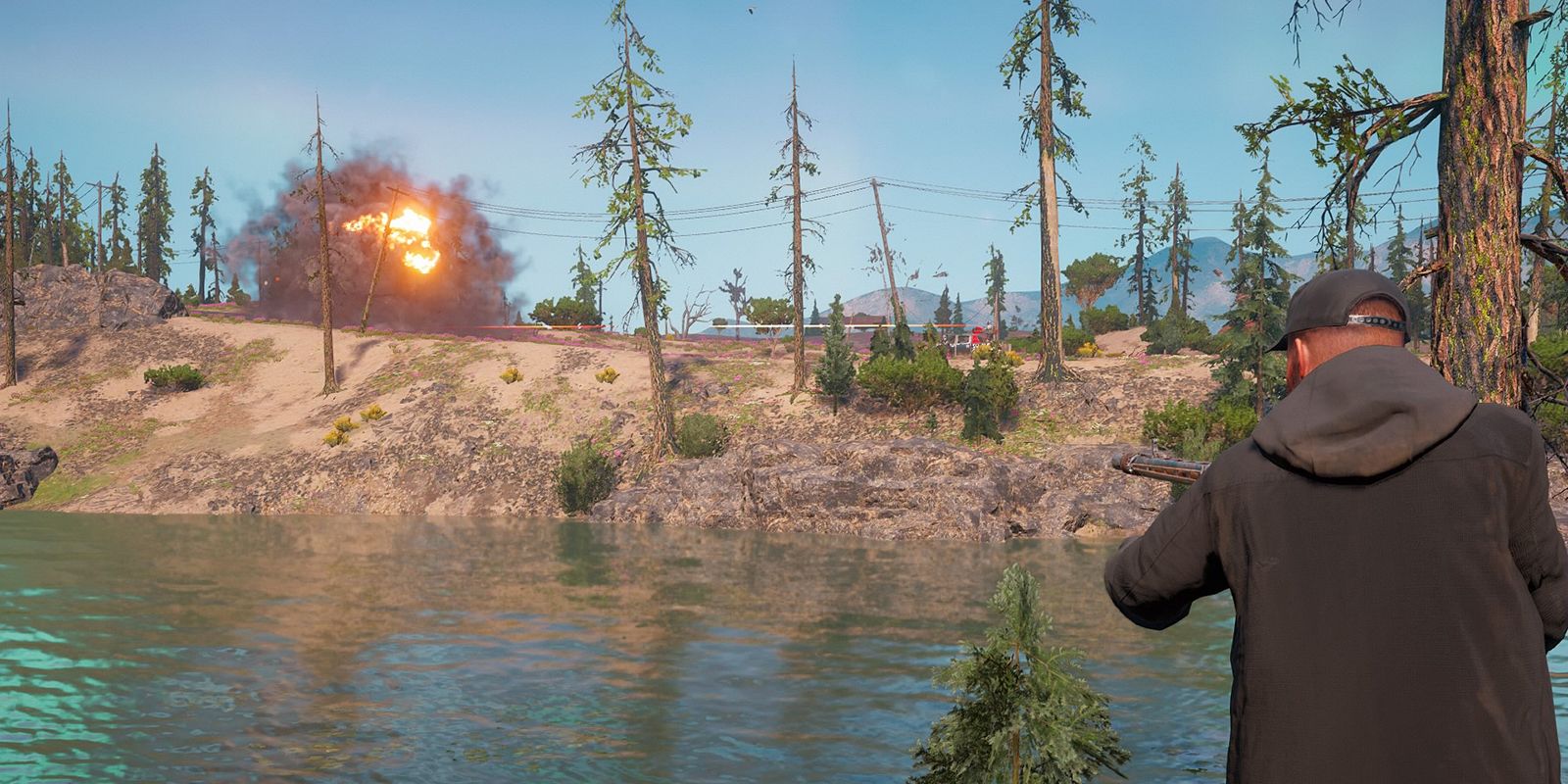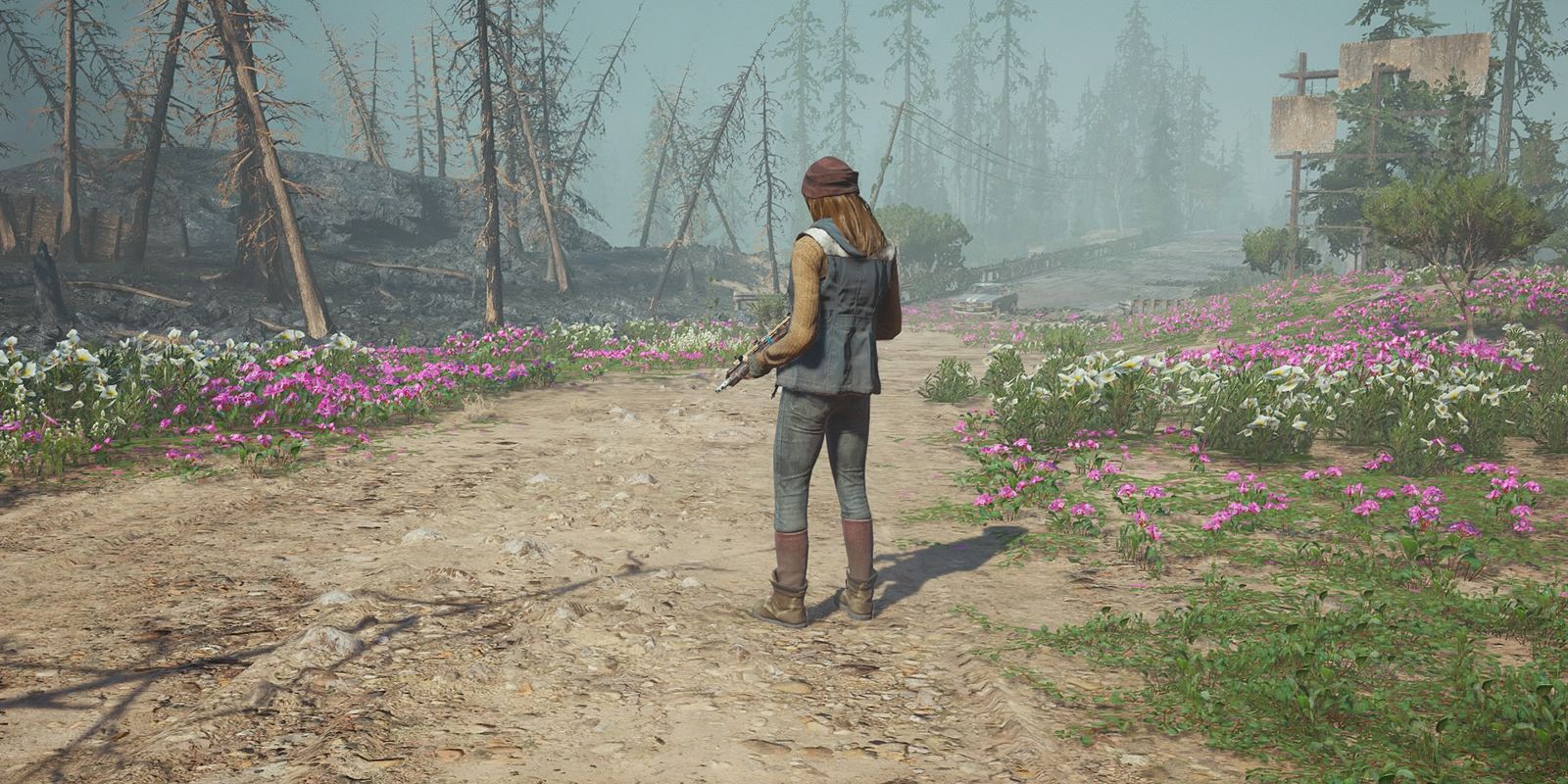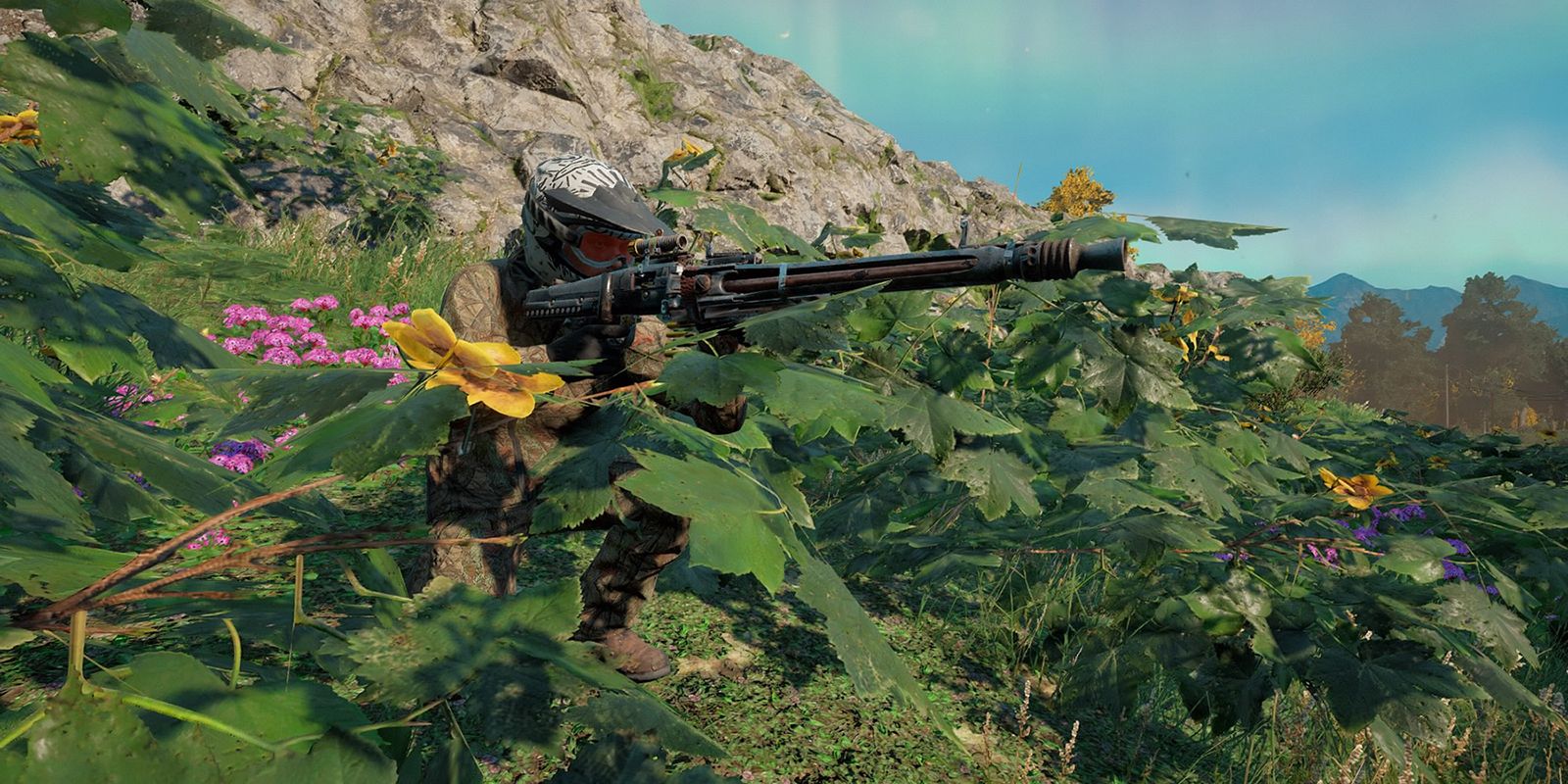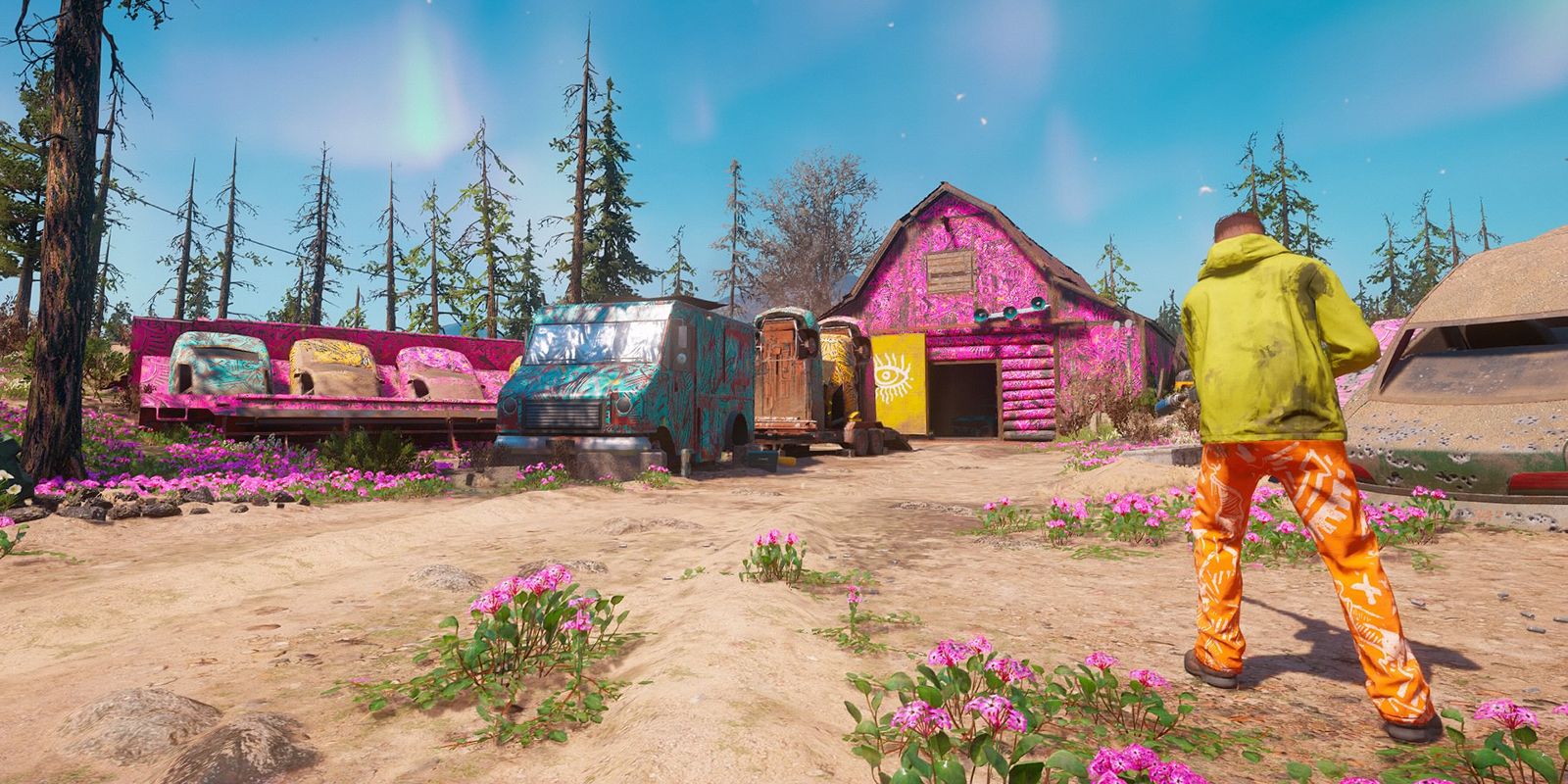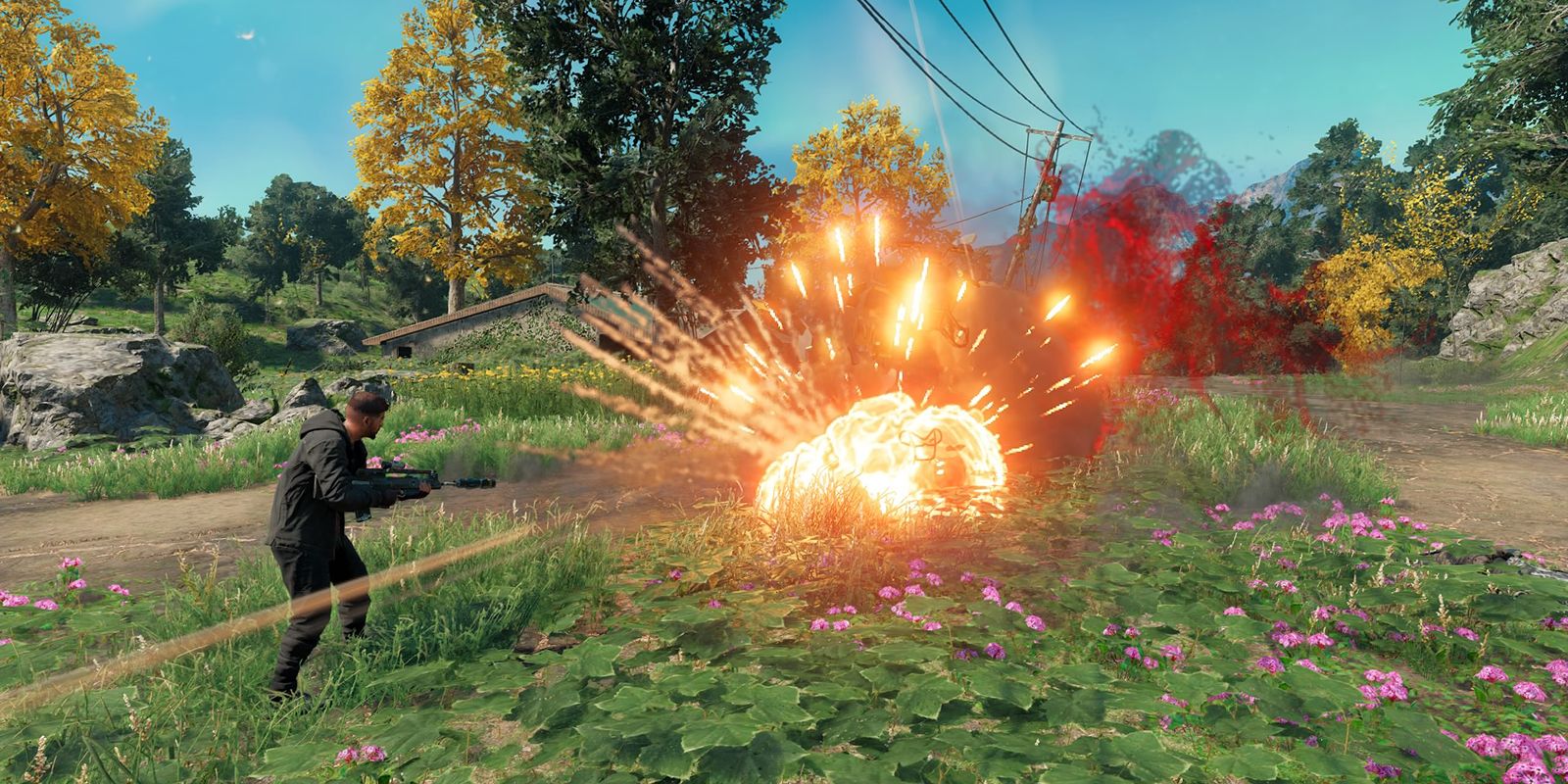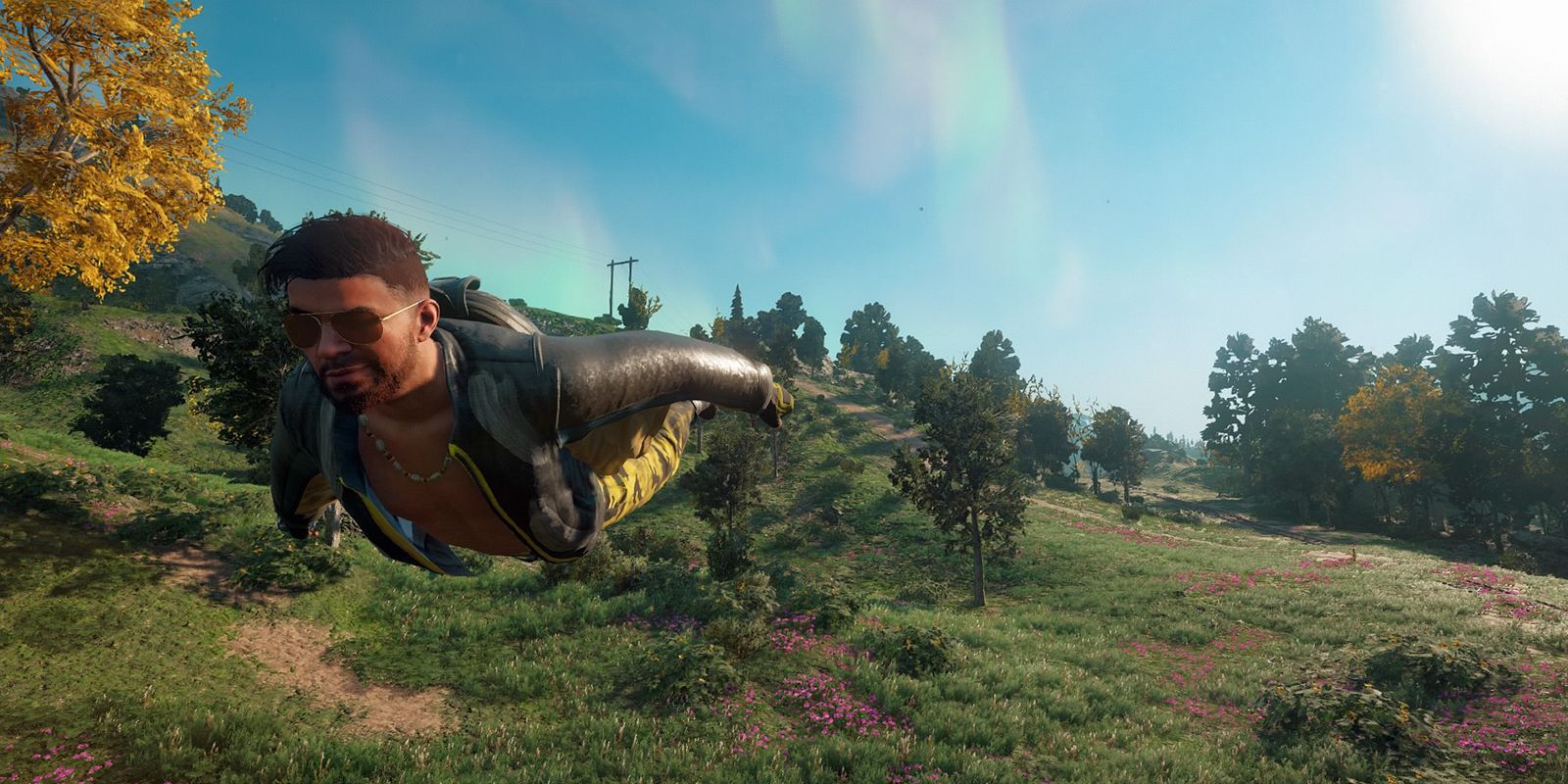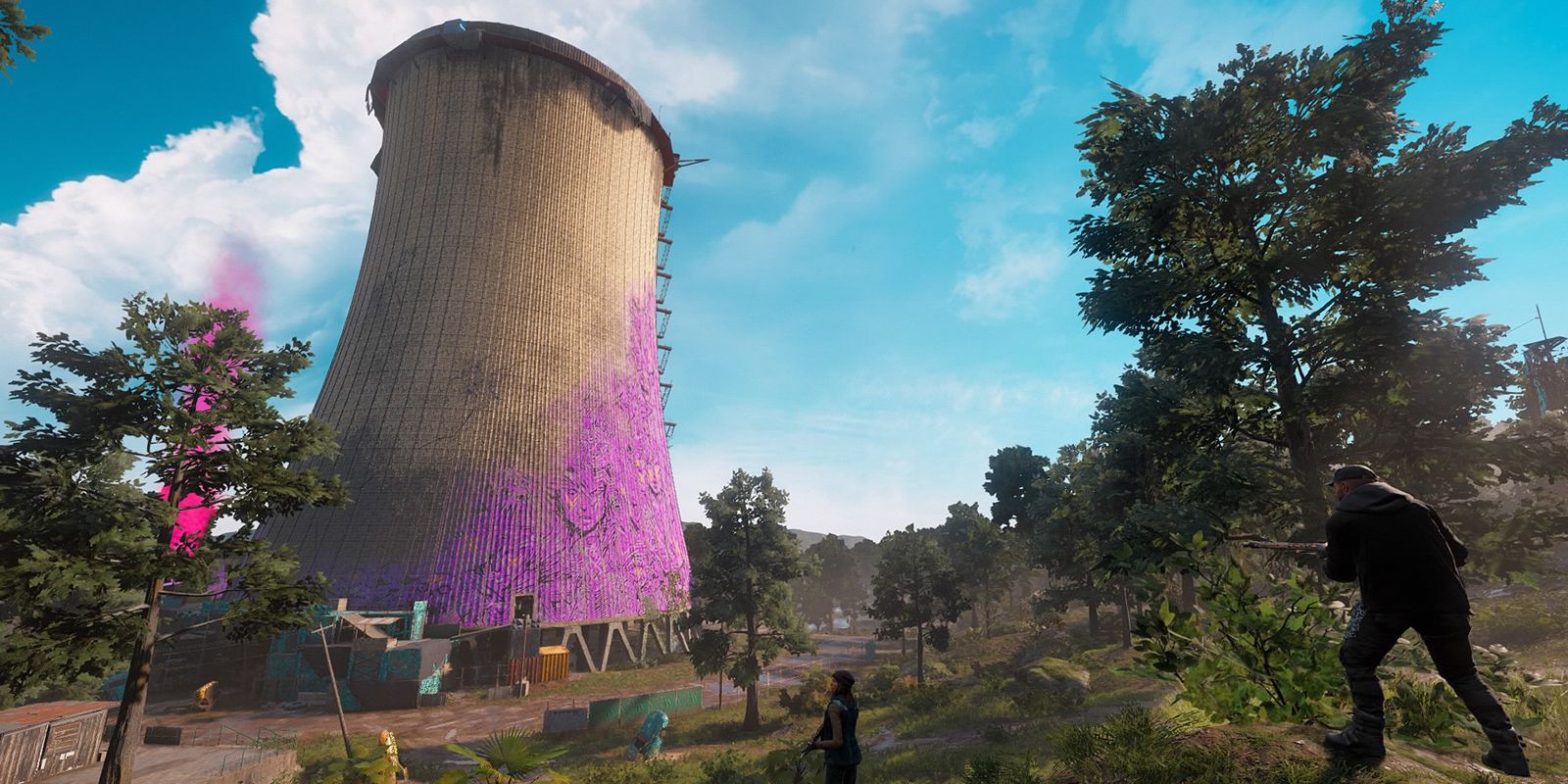Far Cry 5 was a divisive one for fans, with perhaps the best gameplay that the series had offered but a story that split both fanbase and critics alike. Follow-up Far Cry: New Dawn takes players back to Hope County, and returns to parts of its predecessor from a gameplay perspective - even if its tone is very different.
Set seventeen years after the events of Far Cry 5, Far Cry: New Dawn marks the first time that the franchise has seen a direct sequel. Given that the end of Far Cry 5 saw the world devastated by nuclear war, the franchise looked set to take a radical departure from previous games. Rather than a Fallout-style wasteland however, Montana has once again been overtaken by nature, akin to Horizon: Zero Dawn.
Related: Screen Rant's 25 Most Anticipated Video Games of 2019
This leaves Hope County in much the same state that it had been before the apocalypse. Already a rather rural place, it simply means that human settlements are fewer and farther between, with animals (occasionally with the odd mutation) taking hold of places where civilization used to stand. However, all in all the setting of Far Cry: New Dawn doesn’t feel that dissimilar to the last game.
The big change is that the empty or hardly-populated buildings spotted around Hope County are now ruins of what stood seventeen years before, ripe for exploration. These could be smaller places like farms or houses, but major plot locations from Far Cry 5 are here as shells. One particular highlight was revisiting the formidable base of operations for the militaristic Jacob Seed, whose hideout has now become a flooded relic.
There's a clear attempt to give players a new take on the post apocalypse through vibrant color. The greens of nature are contrasted against the neons of the enemy Highwaymen, a gang of Mad Max-esque raiders who come to Hope County and wrest control from the relatively peaceful settlement of Prosperity. Most of the time, it's a rather gorgeous game to behold, although it probably doesn't reach the heights that players might expect.
At its best, Far Cry: New Dawn really plays with the contrast between the exhumed remains of a world ravaged by a nuclear winter and the mysterious new life found in Hope County. Around the edges of the map the world is dead and quiet, ominously staring down on the life and violence of the fight between Prosperity and the Highwaymen. This cross-section is supremely effective, but isn't utilized enough over the course of the game.
Far Cry: New Dawn's world will definitely feel familiar to players of Far Cry 5, but that's not the only similarity to be found here. Many of the game mechanics are the same, with the skill system of Perks returning in the same manner as before, as well as aspects like hunting down prepper stashes for hidden supplies.
These Treasure Hunts are still an awful lot of fun, testing problem-solving capabilities and providing the odd bit of platforming. They are sometimes tied to characters from Far Cry 5, which is a neat way for returning players to find out what happened to those NPCs they met during their adventure last time out via intimate stories.
In these moments, Far Cry: New Dawn finds a narrative voice. Often, the player will track the progress of one or a group of survivors through a specific journey, told through environmental storytelling, scrawled notes or audio recordings. Much like Far Cry 5, it feels as though there are occasional moments of a plot-driven experience like What Remains of Edith Finch, the perfect example of this being the route taken by a group of climbers attempting to rescue a trapped friend.
These little pockets of introspection help give a framework to what is otherwise a chaotic, free roaming action game. The big change this time around is the introduction of RPG-style mechanics when it comes to weapon and enemy tiering, and this aspect is likely to be a divisive one. Players will have makeshift weapons (and vehicles) in four different strengths, and will meet enemies that also have different levels of toughness.
Because of this, combat can be a mixed bag for players. At times, enemies feel too much like bullet sponges, with the top tier Enforcers in particular throwing any kind of realism that Far Cry combat had out of the window. The inclusion of health bars for enemies also makes the gameplay feel different, and more akin to multiplayer-centric shooters like Borderlands with goofy numbers popping off for every landed shot.
Far Cry: New Dawn players might find their mileage varies under the new system. For stealth-based players it puts a much greater emphasis on utilizing takedowns and one-hit KOs effectively, particularly as the game progresses. However, more direct players may find that the swift and brutal gameplay of previous Far Cry games feels a bit lengthened, and not necessarily for the better.
When it comes to Perks, Far Cry: New Dawn follows in the tradition of Far Cry 5, but offers up a more streamlined approach. There are still several options there, but the variety isn't the same, instead with certain Perks being reusable to gain more hand-to-hand damage or carry more ammunition. Meanwhile, those last few hopes of realism in Far Cry 5 have been replaced with Far Cry 3-style super powers, with double-jumps and rage attacks introduced over the course of the game.
Far Cry: New Dawn feels more streamlined from a story perspective, too. Far Cry 5 was an ambitious game when it came to themes, grappling with a tangled web of (sometimes contradictory) elements, but its sequel pulls things back, mainly revolving around the pressure of family and destiny. There are three main family dynamics in the game, with all playing out in different ways, but it doesn't delve the same depths as the likes of Far Cry 5's cult takeover.
In a way, the apocalypse of the last game has allowed many of the awkward loose threads it left behind to be avoided. That said, it will frustrate those hoping for wider resolutions from Far Cry 5, particularly when the lasting effects of Bliss are left dangling throughout. Far Cry: New Dawn is haunted by the shadow of the unanswered questions of its precursor a lot of the time.
At the very least, the odd politics of the last game aren't as jarring here. It was awkward going on a bloodthirsty rampage against a cult, given the way that cults traditionally take advantage of those in desperate and unfortunate positions; in a way, this raised a bigger question of who the real villain is than any of the pseudo-philosophical dialogue that Joseph Seed put forward. Far Cry: New Dawn is simpler. There is a horde of nasty, post-apocalyptic killers, and you have to blow them up - even if the game does sometimes draw sympathy through the harshness of a post-nuclear life.
The duel antagonists of Lou and Mickey are villains in the tone of Far Cry 3's Vaas, rather than the more nuanced approach of the Seeds. Some will feel this is a step back from the complexity of the Family, but this does allow the returning Joseph Seed to function better. Whereas the sometimes infuriating, lackadaisical nature of the Seed family caused dissonance at times in Far Cry 5, sharing the spotlight with some more direct, aggressive villains makes him more interesting here - although questions will be asked as to whether Seed functions as a standalone character for those who haven't picked up Far Cry 5 before playing New Dawn.
There's still a bit of a tone clash going on, too. Heavy, dramatic plot points and supernatural, world-bending moments are joined by the goofy humor that was prevalent in Far Cry 5. It's hard to make puerile sex jokes and butchered prisoners go hand in hand, and Far Cry: New Dawn doesn't quite pull it off. Meanwhile, the occasional reminder that the player has decked out their character in a monkey mask and neon pants does take the tension away from boss fights and serious set pieces a little.
It’s easy to suggest that Far Cry: New Dawn draws heavily on what has come before, but the game does try a few new things, both mixing up the traditional Far Cry formula and introducing new elements. The biggest (and most successful) of these is the new Expedition feature. Players can escape Hope County by helicopter and take part in daring smash-and-grab raids against the Highwaymen in self-contained small missions.
These are some of the best moments in Far Cry: New Dawn. From abandoned theme parks to aircraft carriers and nuclear power plants – even Alcatraz gets a brief cameo – these missions are definitely showstoppers. They can also be replayed at higher difficulties to gain additional resources, although the allure of a fresh location is not as charming the second time.
This replay mechanic is also the main change for Outposts. Enemy bases are raided for resources, in particular Ethanol which is required to progress through the story by upgrading Prosperity. Completed Outposts can be ‘salvaged’, handing power back to the Highwaymen in order to get a boosted amount of Ethanol the next time around and dishing up an extra challenge when it comes to enemy difficulty level.
Much like the Expeditions, the emphasis is on replaying these events in order to gather enough resources to function. For Expeditions, it’s loot required for more powerful weapon crafting, while Ethanol upgrades the home base, unlocking higher levels of crafting , health percentage, or Gun For Hire strength. At times – particularly when it comes to Outposts – players will feel as though they have to replay these elements in order to reach a level they want. If a player wants to upgrade everything and unlock all weapons, then replaying these is definitely necessary.
This can feel like a grind, particularly for those players who don’t enjoy repeating gameplay in order to progress. Unfortunately, Hope County has an immersion-breaking in-game currency, effectively the Highwaymen version of Disney Dollars, and it can be used to fast track resources or buy items outright, including clothing and certain weapons. The currency is found in Treasure Hunts and can also be bought with real-world money, and it's a quick way to get around replaying Outposts and Expeditions.
The issue here is that the in-game currency isn't just for cosmetic items but instead ties into elements that are compulsory to complete the game. Upgrading Prosperity is required to progress through Far Cry: New Dawn's story, and so having it so tied to microtransactions definitely leaves a sour taste - particularly in a game that is ostensibly single-player. Players can buy crafting materials and perk points and that pay-to-win mentality clearly affected the grind focus where players have to loot an insane amount of things to progress.
There are still aspects to enjoy from Far Cry: New Dawn. Its tweaks to the formula will likely be a litmus test for what comes ahead, as they will prove contentious among the fan base, while the game feels more cosy and less risky from a narrative perspective than the more outrageous moments of Far Cry as a whole. It doesn’t necessarily rock the boat as much as some players might want, or in the right ways, but there’s enough of a punch to make it a compelling shooter for the most part. Just watch out for those in-game purchases.
More: 12 New Things You Need to Know About Far Cry: New Dawn
Far Cry: New Dawn releases February 15, 2019 for PC, PS4, and Xbox One. Screen Rant was provided with a PS4 download code for the purposes of this review.

